As a lover of flowers, I must admit that I cherish the idea of gardening. When flowers are well-groomed, they bloom, and they rise to serve their natural aesthetic purpose.
For that reason, I decided to dig deep into my favorite garden flower, the gerbera daisy, a popular flower known for its crowned multicolored blooms. I believe that my findings on this particular plant will help you take better care of your gerbera daisy plants.
Suppose that you are a gerbera daisy enthusiast like me, the question is: what would you do to ensure that your flowers blossom?
Like all flowers, good care ensures that they flourish, and there is not much difference with gerbera; for it, daisy thrives when planted in well-drained soil with mild climatic conditions.
As much as we may believe that all flowers thrive under certain conditions that are often assumed to be similar, the gerbera daisy, in its uniqueness, enjoys some exceptions. These delineations see gerbera daisy bloom strictly in temperate conditions, an exemption that is not a norm for most garden flowers.
Why Is My Gerbera Daisy Not Flowering?
Gerbera daisies are a common sight in home gardens and floral arrangements. They bring an instant burst of bright color to any space, but unfortunately, they can sometimes be finicky when it comes to blooming. So why isn’t your gerbera daisy flowering? It could be a number of things!
From too much sunlight or water to not enough nutrients or even temperature fluctuations, there’s likely something amiss with your plant that needs attention before you’ll see those beautiful blooms again. Don’t despair though – all hope is not lost for your flower friend!
With some troubleshooting and the right care techniques, you can get your gerbera daisy back on track and bloomin’ in no time. Let’s take a look at what might be going wrong so we can make sure you don’t miss out on enjoying these vibrant flowers.
Using Homemade Fertilizer for the Gerbera Daisy
Homemade fertilizer for gardening can be as simple as using organic refuse easily available within a home setup. Likewise, common commercial plant nutrients such as nitrogen, phosphorus, and potassium can be bought separately and mixed at home in certain proportions to develop a good formula that would foster the growth of gerbera daisy.
Adding compost mature to the soil in which these flowers are to be planted has many benefits, and it marks the first step I would take to ensure that gerbera daisy is well taken care of. With organic manure in the soil, there is increased activity of microorganisms.
These microorganisms churn and loosen up soil particles and, in the process, provide the much need aeration in the soil. Besides, compost maturity is ideal for nourishing gerbera daisies due to its unmatched ability to retain moisture in the soil effectively.
While organic manure does a marvelous job in enabling gerbera daisy to thrive, commercial fertilizers, on the other hand, have their precise applications. And so, the second step that I would take to deliver an ideal homemade fertilizer is to buy these commercial plant nutrients and then mix them based on the objectives that they are to serve once in use.
Generally, nitrogen helps enrich plant foliage; phosphorus fosters the development of flowers and fruits, while potassium improves the stems and roots of plants.
For gerbera daisies, their blooms are as important as their stem and roots. With a prerequisite in mind, I then mix the three nutrients in an equal apportionment of 12-12-12 to denote the nitrogen, phosphorus, and potassium formula that would work in equal measure to deliver gerbera development daisy flowers.
Typically, nitrogen is often apportioned in a relatively higher proportion while dealing with other plants and flowers to enable them to have healthy foliage. However, for this purpose, I emphasize gerbera’s large and crowned flowers and apportion an equal phosphorous ratio that would enable the flowers to bloom faster.
How To Water Gerbera Daisies
Watering your gerbera daisies is an art, not a science. For example, if you water them too much, they’ll get soggy and eventually die; but on the other hand, give them too little and they’ll wilt away in no time flat. So how do you ensure that your gerberas stay perky and happy? Read on for expert tips!
It is important to know when to water your plants – ideally before they start wilting or drooping due to lack of moisture. You should also make sure the soil has had enough time to dry out between watering sessions so as not to encourage root rot. Additionally, try using lukewarm rather than cold water since this helps prevent shock. Finally, consider providing extra humidity around your daisies with a humidifier or misting bottle.
Light
Gerbera daisies need plenty of sunlight to bloom, so it’s important to plant them in a spot with lots of direct exposure throughout the day:
- Make sure they are placed at least six hours per day in full sun.
- If you live somewhere that has intense summer heat, consider partially shading your Gerberas during peak daylight hours.
- During winter months, when there is less sunlight, supplement natural light exposure indoors using grow lights for about 12-14 hours each day.
- Monitor the amount and intensity of light as days become shorter or longer; adjust accordingly by rotating their position if needed.
If you provide enough bright sunshine for your Gerberas, then you’re one step closer to getting those beautiful blooms! Soil conditions can also play an important role in helping these flowers reach their full potential…
Soil
Right from the start, let’s get one thing clear: gerbera daisies need soil that’s well-draining. If you want them to bloom, it has to be a priority! You’ll want your potting mix or garden bed to have plenty of organic matter in it—things like compost and peat moss help retain moisture while still allowing adequate drainage. If you’re planting directly into garden beds, make sure there is no standing water after rain.
When selecting potting soils for container gardening, opt for those labeled specifically for flowers. Different kinds of soils contain different levels of nutrients, so it’s important to choose wisely if healthy plants are what you desire. It can also be helpful to add fertilizer when transplanting seedlings and during mid-season feedings as well.
But don’t forget about pH balance either; gerberas prefer slightly acidic conditions with an ideal range between 5.5 – 6.5 on the pH scale. Too much alkalinity can prevent these beauties from flowering properly by preventing their roots from taking up essential minerals from the soil. With the right soil management practices, however, gerberas should thrive.
Temperature And Humidity
If you want your gerbera daisies to blossom, it’s crucial to maintain just the right level of temperature and humidity. The ideal range for daytime temperatures is between 65 and 75 degrees Fahrenheit, while nighttime temperatures should be around 55 degrees. Keep an eye on the weather forecast, as prolonged exposure to extreme heat or cold could prevent your flowers from opening.
Humidity levels between 40 and 50 percent are ideal and can be attained through regular misting. To avoid drying out those delicate petals, a humidifier should be used if your home has a dry, heated atmosphere. Make sure there is adequate ventilation by opening windows frequently; stagnant air will not be beneficial.
Fertilizer
Having the right temperature and humidity for your gerbera daisies is just one part of caring for them. Fertilizing is another important part that should not be overlooked! Here are a few tips to help you get started:
- Use an organic fertilizer specifically formulated for flowers, such as bone meal or fish emulsion.
- Apply it to the soil around the plants once every four weeks during their active growing season (spring through summer).
- Don’t over-fertilize; too much can burn the roots and damage the blooms.
To make sure you’re giving your gerbera daisies all they need to thrive, take some time in late winter to check on the nutrient levels in your soil with a soil testing kit – it’s worth it! If necessary, add in compost or other amendments to give your gerberas what they need come springtime when they start actively growing again. And don’t forget about mulching too; this helps regulate moisture and protect their delicate roots from extreme temperatures and harsh sunlight exposure.
While fertilizing may seem like a chore at first, knowing how often and which type of fertilizer to use will pay off big time when those beautiful blooms start showing up throughout the season! So keep these tips in mind and enjoy watching your beloved gerbera daisies flourish under your care.
How If Your Gerbera Daisy is not Blooming?
There are a few reasons why a gerbera daisy might not be blooming. Some possible reasons include lack of sunlight, improper watering, and inadequate fertilization. It’s also possible that the plant is not getting enough of certain nutrients, such as potassium and phosphorus, which are essential for flowering. Additionally, gerbera daisies can stop blooming if they are not receiving adequate amounts of air circulation. If you’re unsure why your gerbera daisy is not blooming, it’s best to consult a professional who can diagnose the problem and recommend a solution.
Gerbera daisies typically bloom from late spring to early fall, with peak blooming occurring during the summer months. But the length of their blooming period will depend on several factors, including the plant’s age, the climate in which it is grown, and the care it receives. In general, gerbera daisies will produce the most flowers when the weather is warm and sunny, and the plant is well-watered and fertilized.
However, even with optimal care, gerbera daisies will eventually enter a dormant period, during which they will stop producing flowers and focus on growing new leaves and stems. Once the plant has had a chance to rest, it will begin to produce new flowers, and you will be able to enjoy another round of blooms.
Like many other plants, gerbera daisies go through a dormant period after they have finished blooming. During this time, the plant will stop producing flowers and focus on growing new leaves and stems. Once the plant has had a chance to rest, it will begin to produce new flowers, and you will be able to enjoy another round of blooms. To encourage your gerbera daisy to rebloom, make sure it is receiving adequate sunlight, water, and nutrients, and avoid disturbing the plant’s root system.
Using Miracle-Gro
Miracle-Gro is a brand of plant food that is commonly used to help plants grow and thrive. In general, Miracle-Gro is safe to use on gerbera daisies and can help promote healthy growth and abundant blooming. However, it’s important to follow the product’s instructions and use it in the appropriate amount to avoid over-fertilizing your gerbera daisy, which can cause the plant to become stressed and potentially stop blooming. It’s also a good idea to periodically test the soil’s pH levels to ensure that they are within the optimal range for gerbera daisies, which is between 6.0 and 7.5.
How to Get Long Stems for the Gerbera Daisy
Customarily, healthy flowers boast long sturdy stems. Therefore, seeing to it that gerbera daisy has long, strong stems would be part of the larger goal of getting the best out of these flowers. The point here is to avoid stunted growth and seek to reduce the rate at which wilting occurs.
Naturally, the undertaking involves the regulation of moisture, temperature, and nutrients. So planting your gerbera daisies in well-moisturized soil, neither too dry nor too soggy, is the first step in ensuring that the growth of your flowers is unimpeded.
Most important in this attempt is to ensure that the plant is supplied with the most favorable fertilizer formula that supports growth. The recommended nitrogen, phosphorus, and potassium mixture that I would use to achieve this long and strong stems for the plant is 24-8-16. The formula favors nitrogen and potassium, leading to the development of strong, healthy plants. In addition to these steps is the process of deadheading.
Deadheading ensures that mature or wilting flowers are cut off to warrant the growth of more flowers. What follows after the deadheading process is that the stems of gerbera daisies will grow longer.
How to Deadhead Gerbera Daisy
As flower gardeners, we may understand the idea behind the process of deadheading but do we really know how to go about it? To effectively handle the process, a sharp knife or a pair of scissors is used to nip the flower stalks at their bases to avoid damaging their stem and give new buds a chance to spruce up.
It would be best if you did deadheading at the right time. Usually, the nipping process of the flowers is done after a large number of blooms pop up, when they mature, or when the flowers start to wilt.
You can then place the deadheaded blooms in a water vase, sent as a present, or the wilting ones used to enrich the soil. For newly planted gerbera daisies, maturity and serious wilting begin after the fourteenth week of planting and may run until the eighteenth week. This is the best time to begin the process of nipping these flowers.
What Month Do Gerbera Daisies Bloom
Now that you know why your gerbera daisy isn’t flowering, let’s look at when to expect blooms. Gerbera daisies typically bloom in the spring and summer months of April through August. While they can occasionally be found blossoming during fall and winter, it is less common for this type of flower to do so.
If all conditions are met – the right climate, location, and amount of sun – then you should have no problem getting those petals unfurling! To ensure success, use fertilizer regularly throughout the growing season according to label directions and provide adequate drainage while watering by avoiding puddles forming near the root zone area.
Time Taken for Gerbera Daisy to Bloom
Generally, gerbera daisies produce their flowers between the 14th and 18th week of planting. However, the difference in the blooming period which runs to about four weeks is attributed mostly to the care given to these flowers and the conditions under which they grow.
For instance, well-cared-for gerbera daisies endowed with a good combination of conditions such as soil, moisture, nutrients, and sunlight, are likely to mature faster and may even bloom before they reach the fourteenth week.
In poor conditions, however, stunted growth, yellowing of leaves, and disease invasion are the likely norms to be encountered. As expected, such flowers will take a longer time to bloom.
Diseases Likely to Impede Gerbera Daisies’ Blooming and Their Remedy
Diseases generally hamper plant growth, and as such, hinder the maximum blooming of flowers. And gerbera daisy is not immune to this reality. Here are some of the diseases that affect the gerbera daisy and the most effective prevention methods.
Powdery Mildew. It is a fungal infection that affects the flowers and the leaves of gerbera daisies. It is often manifested as a powdery substance. Powdery mildew is prevalent during high humidity or widespread cloud cover and unfavorable temperatures that typically fall below 10C (50F).
To prevent the disease, necessary conditions that favor the growth of the flowers must be availed at all times. Besides, You can use antifungal substances such as potassium bicarbonate to remedy the infestation of the disease.
Botrytis Blight. When you happen to see grey fungal spores form on the leaves and flowers of your gerbera plants, then know that they are under botrytis blight attack. Botrytis blight is common during rainy, cold weather, and it thrives in similar conditions as powdery mildew.
To prevent the disease, guaranteeing ideal soil aeration and adequate moisture in the soil ensures that the disease is kept at bay. You can do this by effectively mulching the plants. In botrytis blight infestation, however, Daconil fungicides can remedy the effects of botrytis blight.
Black Root Rot. This disease eats into the plant’s roots and manifests itself in yellow leaves and black rushes that appear at the base of the stem of gerbera daisy. Good drainage, achieved through mulching, prevents black root rot invasion.
Besides, an ideal spacing between 18-24 inches between plants reduces the spread of black root rot. In the event of severe black root rot invasion, however, uprooting the infected plants is an option that you should explore.
With the understanding that gerbera daisy is a climate-sensitive plant and that it thrives only in specific conditions, we can then work for the plant to provide these conditions and ensure that it blooms.
Providing these conditions is the key to achieving this objective. First, the soil where gerbera daisy is to be planted must be adequate moisture and well aerated. Then a good formula of commercial nutrients that targets specific parts of the plants must be mixed and used appropriately.
Besides, the process of deadheading gerbera daisy ensures that the plants spruce up more flowers, the stems grow longer, and the plant stays healthy generally. Lastly, preventing disease and remedying disease infestation guarantees blooming gerbera plants.


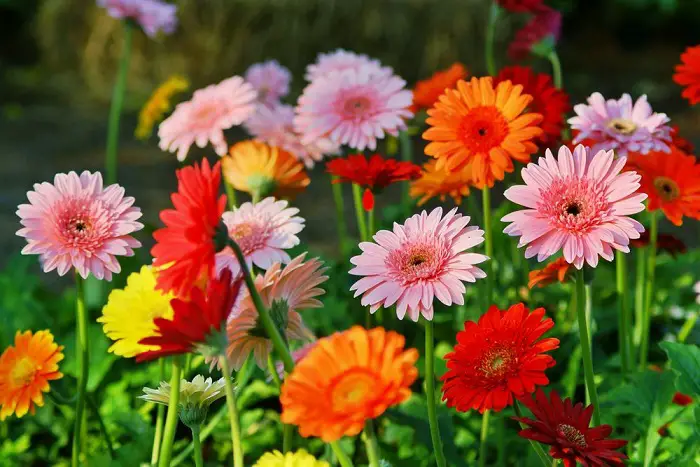
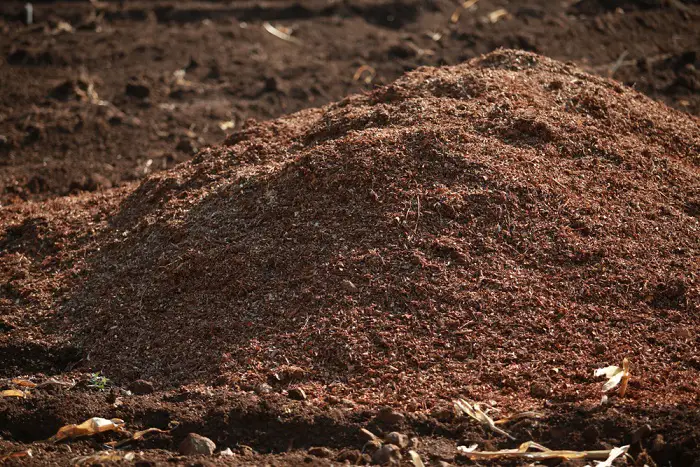
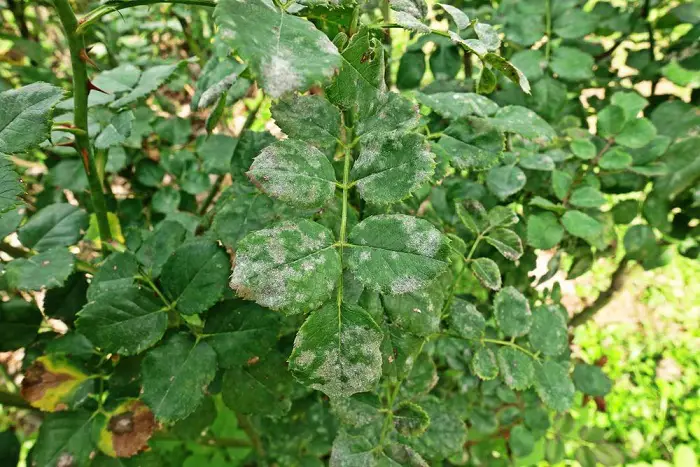
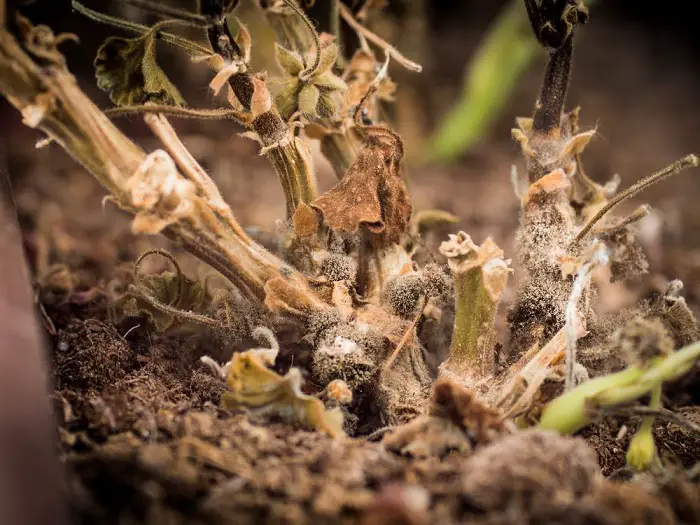
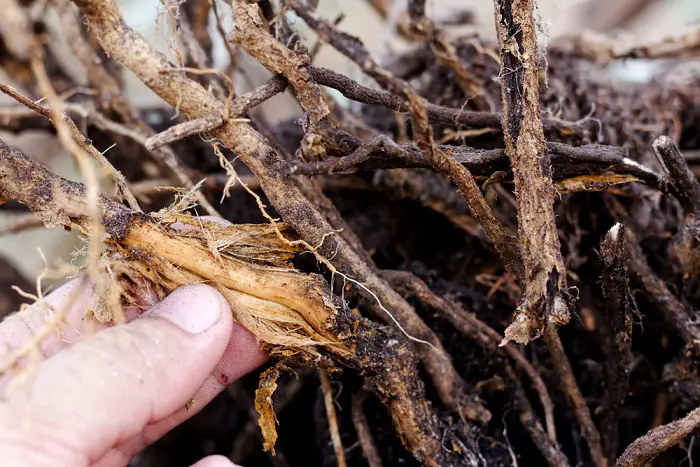
Very helpful, I love gerbera daisies , I’m zone 9